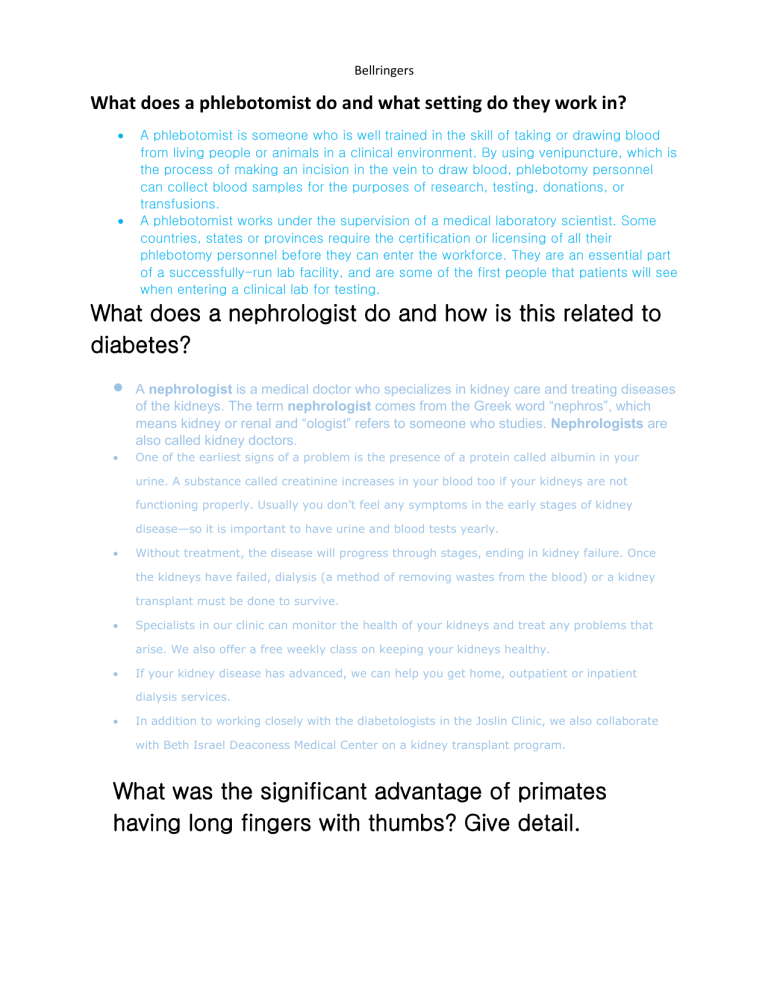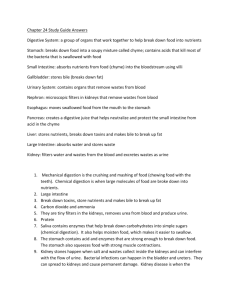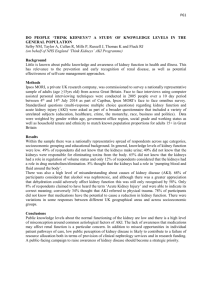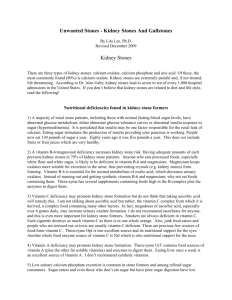12-17-15 RAH

Bellringers
What does a phlebotomist do and what setting do they work in?
A phlebotomist is someone who is well trained in the skill of taking or drawing blood from living people or animals in a clinical environment. By using venipuncture, which is the process of making an incision in the vein to draw blood, phlebotomy personnel can collect blood samples for the purposes of research, testing, donations, or transfusions.
A phlebotomist works under the supervision of a medical laboratory scientist. Some countries, states or provinces require the certification or licensing of all their phlebotomy personnel before they can enter the workforce. They are an essential part of a successfully-run lab facility, and are some of the first people that patients will see when entering a clinical lab for testing.
What does a nephrologist do and how is this related to diabetes?
A nephrologist is a medical doctor who specializes in kidney care and treating diseases of the kidneys. The term nephrologist comes from the Greek word “nephros”, which means kidney or renal and “ologist” refers to someone who studies. Nephrologists are also called kidney doctors.
One of the earliest signs of a problem is the presence of a protein called albumin in your urine. A substance called creatinine increases in your blood too if your kidneys are not functioning properly. Usually you don’t feel any symptoms in the early stages of kidney disease—so it is important to have urine and blood tests yearly.
Without treatment, the disease will progress through stages, ending in kidney failure. Once the kidneys have failed, dialysis (a method of removing wastes from the blood) or a kidney transplant must be done to survive.
Specialists in our clinic can monitor the health of your kidneys and treat any problems that arise. We also offer a free weekly class on keeping your kidneys healthy.
If your kidney disease has advanced, we can help you get home, outpatient or inpatient dialysis services.
In addition to working closely with the diabetologists in the Joslin Clinic, we also collaborate with Beth Israel Deaconess Medical Center on a kidney transplant program.
What was the significant advantage of primates having long fingers with thumbs? Give detail.
Bellringers
The significance of primates having long fingers and thumbs is it gives them the ability to grip small and large objects. And it helps them climb tress
What is the "Loop of Henle" and what does it do for the kidney?
In the kidney , the loop of Henle (or Henle's loop, nephron loop or its Latin counterpart ansa nephroni) is the portion of a nephron that leads from the proximal convoluted tubule to the distal convoluted tubule. Kidney starts to dterariate.
What happens when road crews add salt to the streets in winter? Explain.
When you put salt on ice, liquid water molecules that have not yet frozen on the surface of the ice dissolve a bit of the salt, creating a sort of saltwater solution called “brine." The brine prevents the liquid water molecules from freezing.
Name three different types of sugar found in fruit?
What is different about them
Fructose Content:
it can also be processed into a crystal and used as an added sweetener
Glucose Content:
Glucose is the most important simple sugar for your body as it is the primary source of energy for all organs and mechanisms,
Sucrose Content: table sugar
1
Using fMRI, the researchers saw that men in the study took several shortcuts, oriented themselves more using cardinal directions and used a different part of the brain than the women in the study
2 when women got a drop of testosterone under their tongue, several of them were able to orient themselves better in the four cardinal directions.
3 men got to their destination faster
4
Women have better local memory
5
Women often use a route
The men solved 50 per cent more of the tasks than the women
Bellringers
What intrusions been in the past if there was an introducer in the building?
Covering the widows, turning out the lights being quiet
What is the pH of your stomach and what does it do for you?
The stomach has is approximately 2. 2 is the median.
1-3.
The parietal cell releases bicarbonate into the bloodstream in the process, which causes a temporary rise of pH in the blood, known as an alkaline tide. The reason why your stomach rot away is because the mucus and salvia in the stomach
If you have a high stomach acid you have ulsers
What is the function of the gallbladder and the bile in particular?
Its primary function is to store and concentrate bile, a yellow-brown digestive enzyme produced by the liver. The gallbladder is part of the bilary tract. The gallbladder serves as a reservoir for bile while it's not being used for digestion.
Bile contains bile acids, which are critical for digestion and absorption of fats and fat-soluble vitamins in the small intestine. Many waste products, including bilirubin, are eliminated from the body by secretion into bile and elimination in feces.
What are the parts of the small intestine and what is the general length of the small intestine?
The small intestine consists of three parts . The first part, called the duodenum, connects to the stomach. The middle part is the jejunum. The third part, called the ileum, attaches to the colon
"The length of the small intestine, according to Gray, is about twenty feet ( 6.1 meters );..." "Grayish-purple in color and about one and a half inches (35 mm) in diameter, the small intestine is the first and longest, measuring twenty feet on average in an adult man."










